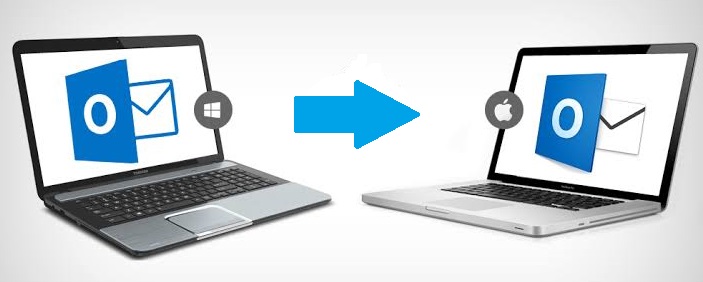
:max_bytes(150000):strip_icc()/10-import-outlook-contacts-into-macos-contacts-for-the-mail-app-a45151a5c102483785924dbd687f6a75.jpg)
In the dialog box that appears, under File Origin, choose the encoding that makes the characters in the text appear correctly, for example, Cyrillic Windows 1251, and then select Load.Ĭheck that characters are displayed correctly in Excel. Browse to your exported CSV file (you may have to select to display Text Files (.csv) to see it). In Excel, create a new blank document (workbook).įrom the Data menu, select From Text/CSV.
#OUTLOOK FOR MAC CONTACTS IMPORT HOW TO#
How to convert your CSV file to UTF-8 using Microsoft Excel 2016: How to do this will be different between apps and app versions. If you can't export your contacts using UTF-8 directly, you can convert the exported CSV file using Excel or third-party apps. Therefore, you should save the contacts file with UTF-8 encoding if you have that option during export. However, if the contact information includes characters not found in the English alphabet, such as Greek, Cyrillic, Arabic, or Japanese characters, this can cause problems when importing contacts. Typically, you can import contacts without worrying about the underlying details of how the text is stored in the CSV file. To learn more about UTF-8 encoding, see Why should I care about UTF-8 encoding? Why should I care about UTF-8 encoding? Convert your CSV file to use UTF-8 encoding, and restart the import. You will need a file in UTF-8 encoding to continue. If the text is not displayed correctly, select Cancel. The import tool will then show you some example contacts from your file, and you can check that the text is readable and correct.

Note: If the file doesn't have UTF-8 encoding, the import tool may not recognize and display all text correctly. To view your contacts, at the bottom of the Outlook navigation bar, choose Contacts. You'll know it's finished when the progress box closes. Outlook starts importing your data immediately. If a folder doesn’t exist in Outlook, it will be created.Ĭhoose Finish.

The default selection of Import items into the same folder in matches the folders from the imported file to the folders in Outlook. All folders under the folder selected will be imported. Include subfolders is selected by default. The top folder - usually Personal Folders, Outlook Data File, or your email address - is selected automatically. The default settings usually don’t need to be changed. Choose the More Choices tab if you want to only import emails that are read or unread. Choose Filter if you want to only import certain emails. Otherwise, choose Do not import duplicates. Under Options, if you want the imported information to replace duplicate items already in Outlook, choose that. To see your contacts, at the bottom of Outlook, choose the People icon. You'll know it's finished when the Import Progress box closes. Outlook begins importing your contacts immediately. If you have multiple email accounts, choose the Contacts folder that's under the email account you want to be associated with the contacts. In the Select a destination folder box, scroll to the top if needed and select the Contacts folder > Next. You should choose this option if the contact info in Outlook is more complete or more current than the info in your contacts file. This is the default option.ĭo not import duplicate items If a contact is in Outlook and your contacts file, Outlook keeps the info it has for that contact and discards the info from your contacts file. You can combine info for those people later to eliminate duplicate contacts. You should choose this option if the contact info in your contacts file is more complete or more current than the contact info in Outlook.Īllow duplicates to be created If a contact is in Outlook and your contacts file, Outlook creates duplicate contacts, one with the original Outlook info and one with the info imported from your contacts file. Replace duplicates with items imported If a contact is already in Outlook and your contacts file, Outlook discards the info it has for that contact and uses the info from your contacts file. In the Import a File box, browse to your contacts file, and then double-click to select it.Ĭhoose one of the following to specify how you want Outlook to handle duplicate contacts: This starts the wizard!Ĭhoose Import from another program or file, and then choose Next.Ĭhoose Comma Separated Values, and then choose Next. See What version of Outlook do I have? to get to the import instructions for your version of Outlook.Ĭhoose Open & Export > Import/Export. If your ribbon doesn't have a File option in the top left corner, you're using an older Outlook version. At the top of your Outlook ribbon, choose File.


 0 kommentar(er)
0 kommentar(er)
